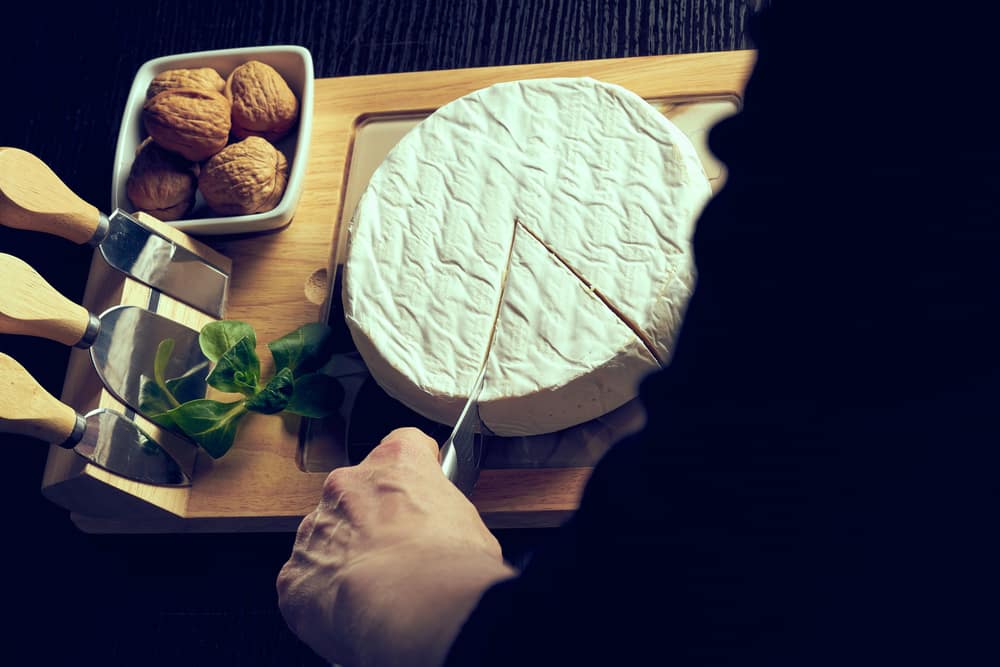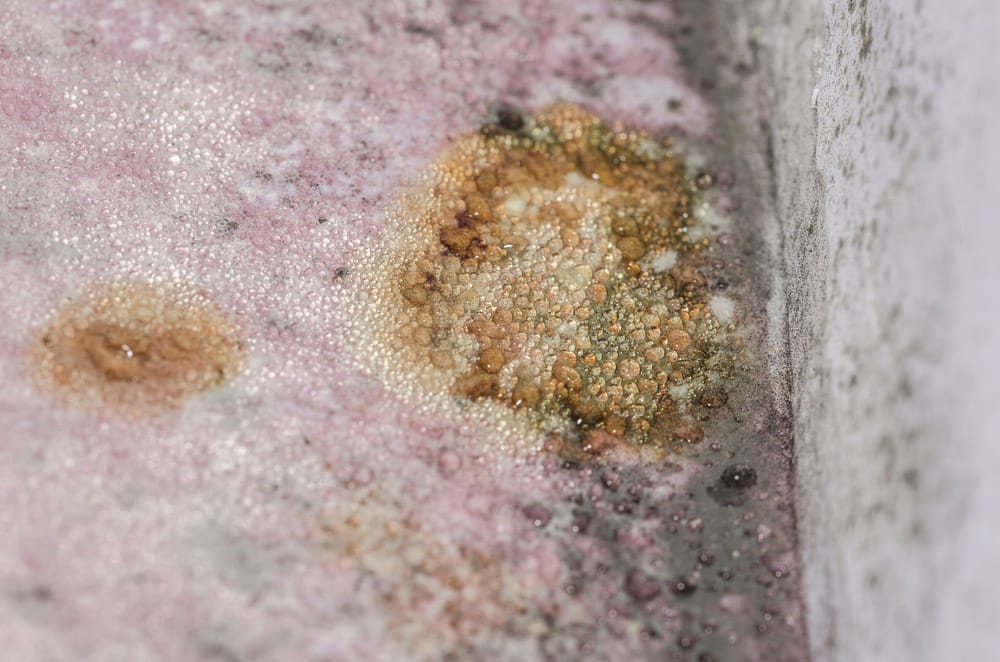
Cheese of some type or other is found in almost everyone’s fridge. If you’re like us, you often have random leftover pieces of cheese lying around and you’ve probably forgotten when you bought it.
However, it turns out that storing cheese for too long might not be a good idea because it can lead to the development of pink and other color molds or bacterial growth on the cheese. If your cheese has developed some of this mold, we have some information that could help!
Pink Mold On Cheese
What Is Pink Mold?
The pink color on cheese isn’t always caused by a type of mold. Molds are technically fungi. Different species of bacteria can also lead to pink color when they develop. Mold growth has a fuzzy appearance while bacterial growth looks more like a pink stain.
Depending on the conditions, pink mold might be accompanied by white mold and/or gray mold. Keep in mind that the pink color will appear in different shapes, such as pink spots or a slimy layer.
In soft cheeses like cream cheese, the pink may be spread throughout the tub whereas, in hard cheeses like parmesan, it may be just under the rind.
Going Into Details
When pink mold is identified before shipping, the cheese manufacturers are obliged to discard it. However, if pink mold develops after you buy the cheese, it’s not the manufacturer’s mistake – it’s probably a storage issue on your end.
Keep in mind that consuming cheese with pink mold on it can be harmful to health, especially if you struggle with other health issues like allergies (it’s not recommended to eat such cheese at all).
If you are concerned about the potential health risks associated with the consumption of cheese with pink mold, they include
- Urinary tract infections
- Bronchitis
- Coughing
- Sneezing
- Rashes
- Respiratory tract infections
- Diarrhea
- Nausea
- Stomachache
These conditions mainly affect babies, children, the elderly or immuno-compromised people.
Why Does Pink Mold Grow On Cheese?
There is no clear explanation for it in the research. Pink mold can develop even if you properly refrigerate the cheese. What’s more, it can start growing from the inside. Various people have reported that they’ve found the pink color when they’ve cut into a block of cheese.
(A processing defect could be one reason). In addition, cheese is a dairy product, so it contains all the nutrients that bacteria love to grow in.
Preventing Pink Mold on Cheese
- Don’t store cheese for a long time because the shelf life is short.
- Ensure that the fridge is not overstocked because this hinders proper temperature control and airflow. This paves the way for mold growth.
- Store all cheeses in the vegetable crisper section of your fridge. The temperature here is colder and more stable than in other parts.
- Wrap most harder cheeses in wax paper then clingfilm to store. Use a fresh piece after each time of use. Blue cheese such as Roquefort should be wrapped in clingfilm. Soft cheeses like Brie or cream cheese should be stored in a plastic container with a lid. Fresh cheese in brine or water like feta should be left in the original container in the liquid.
- It’s difficult to give a length of storage time as it depends on the type of cheese. Generally, the harder the cheese, the longer it will keep.
Is It Safe To Eat Cheese With Pink Mold?
It is better for the people at risk that we have mentioned to avoid it altogether. Others can eat hard cheese with a pink color after removing the colored bits. The mold generally doesn’t penetrate easily into hard cheese. If it is a soft cheese, however, it is best to discard it.
Other colors of mold such as red, grey, brown, green, or blue are also unsafe and the cheese should be thrown out.
How To Avoid Pink Mold
- If you have already bought the cheese, there is nothing much you can do except discard it.
- Before purchase, check the expiry date and manufacturing date on the cheese packet to ensure you are buying a fresh batch.
- Whenever you buy cheese, make sure the container is properly sealed, and there are no damages to the seal (even the slightest cracks can give way to bacterial growth).
- Take a cooler along to the store when purchasing cheese or any dairy products to keep it cold when you’re on your way home.
- As we’ve mentioned, store cheese in the lowest part of the fridge because it’s the coolest area.
- Use it up as soon as possible. If you find yourself with several scraps of cheese, use them up by making a three-cheese mac and cheese recipe or something similar. Alternatively, you can set them out on a cheeseboard and have a cheese platter with crackers, bread, and preserves.
We hope this serves to set your mind at ease about cheese storage and pink mold on your cheese. Be safe and stay well!
